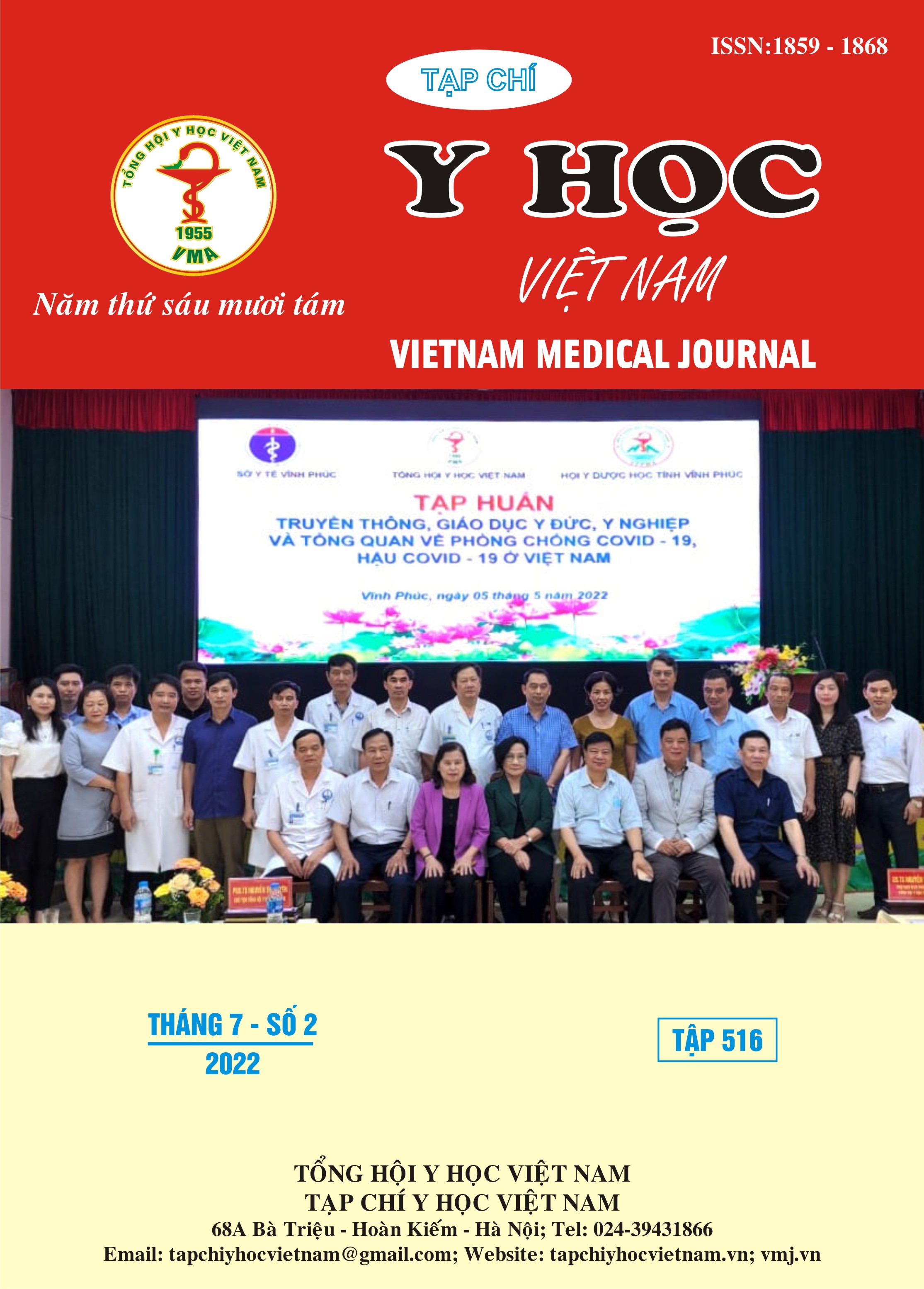EFFECTIVE ASSESSMENT OF MULTIMODAL ANALGESIA AFTER CESAREAN SECTION AT QUANG NGAI HOSPITAL FOR WOMEN AND CHILDREN
Main Article Content
Abstract
Background: Pain relief after Cesarean section relates to the satisfaction of pregnant women, especially multimodal analgesia with spinal morphine combined with intravenous paracetamol and rectal diclfenac. Quang Ngai Hospital for Women and Children has also used this method for a long time, but up to now, there hasn’t been a study to evaluate the effectiveness after Cesarean section. Therefore, this study aims to evaluate the effectiveness of pain relief towards maternal pain. Objectives: To describe some clinical and paraclinical characteristics and evaluate the effectiveness of multimodal analgesia on women after Cesarean section. Methods: Prospective study, comparative clinical intervention performed on pregnant women with Cesarean section receiving spinal anesthesia at Quang Ngai Hospital for Women and Children from April 2020 to September 2021. Results: Clinical and paraclinical characteristics: Indications for laparotomy because of accounts for the highest percentage; group M 46.6%, group F 45%. Next is the genital tract cause (non-progressive labor, large fetus, pelvic disproportion) accounting for 30% in group M and 18.3% in group F. The mean gestational age in 2 groups M and F is 38.7 and 39 week, respectively. The vital signs before and during surgery are similar between the two groups. Changes in the total blood count and biochemical analysis between the 2 groups are within normal limits. Effectiveness of pain relief: Group M had good pain relief efficiency of 96.7%; quite reached 3.3%. Group F had a good pain-relieving effect, accounting for a lower rate of 86.7%. In the first 2 hours after surgery, the average VAS pain score at rest and on movement was less than 1 point. The average VAS pain score at rest and exercise from the 2nd to the 24th hour between the 2 groups was statistically significant. Pain score in group M is always smaller than in group F. The time to maintain pain score at 0 VAS in group M is statistically significant longer than in group F. In group M, VAS pain score of 0 lasted 118.33 ± 39.10 minutes. Most women are satisfied with the quality of pain relief at a good and very good level. Conclusions: Multimodal analgesia combined with spinal morphine, intravenous paracetamol and rectal diclofenac provides good analgesic effect with prolonged duration of complete analgesia and mean VAS pain score during 24 hours is always less than 2.
Article Details
Keywords
Multimodal analgesia, Effective pain relief, Caesarean section
References
2. Nguyễn Chí Dũng, Nguyễn Hồng Sơn (2011), “Đánh giá hiệu quả gây tê tủy sống bằng bupivacain phối hợp sufentanil trong phẫu thuật chi dưới”, Tạp chí Y học TP. Hồ Chí Minh, 15(3), tr.140-147.
3. Trần Huỳnh Đào (2016), “Hiệu quả của phối hợp bupivacain với sufentanil và morphine trong gây tê tủy sống mổ lấy thai”, Tạp chí Y học TP. Hồ Chí Minh, 20 (3), tr.104-113.
4. Nguyễn Văn Minh (2017), “Hiệu quả giảm đau của nefopam kết hợp paracetamol sau phẫu thuật lấy thai”, Kỷ yếu Hội nghị Gây mê hồi sức Miền Trung – Tây Nguyên mở rộng năm 2017, tr.85-92.
5. Nguyễn Thị Hồng Vân (2016), “Đánh giá hiệu quả giảm đau sau mổ lấy thai có phối hợp morphine tiêm tủy sống tại bệnh viện quốc tế Đồng Nai năm 2015”, Tạp chí Y học TP. Hồ Chí Minh, 20 (3), tr.141-144.
6. Jadon A., Bagai Rajni (2019), “Effective Pain Relief after Caesarean Section; Are We on the Right Path or Still on the Crossroad”, Journal of Obstetric Anaesthesia and Critical Care, 9(1), pp.3.
7. Nermin K., Alp G., Gurkan T. (2008), “Intrathecal morphine in anesthesia for cesarean delivery: dose-response relationship for combinations of low - dose intrathecal morphine and spinal bupivacaine”, Journal of Clinical Anesthesia, 20 (3), pp.180-185.
8. Ituk U., Habib AS (2018),“Enhanced recovery after cesarean delivery”, F1000 Research, 7 (1), pp.1-11.


